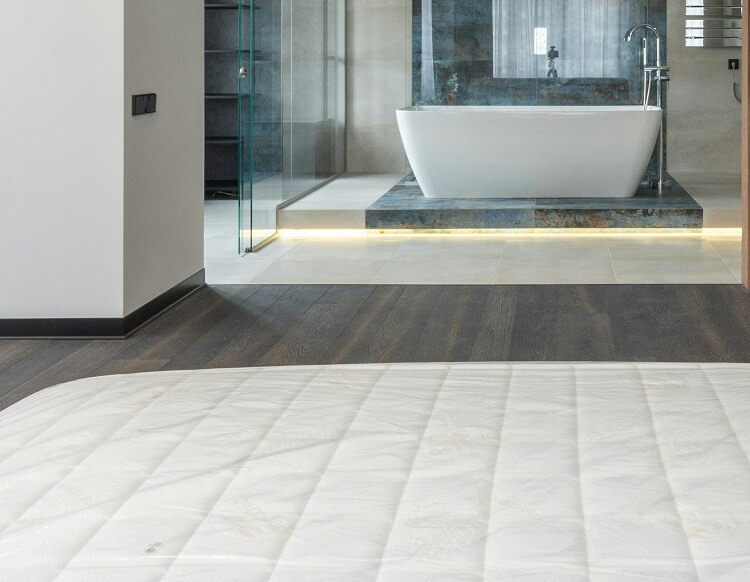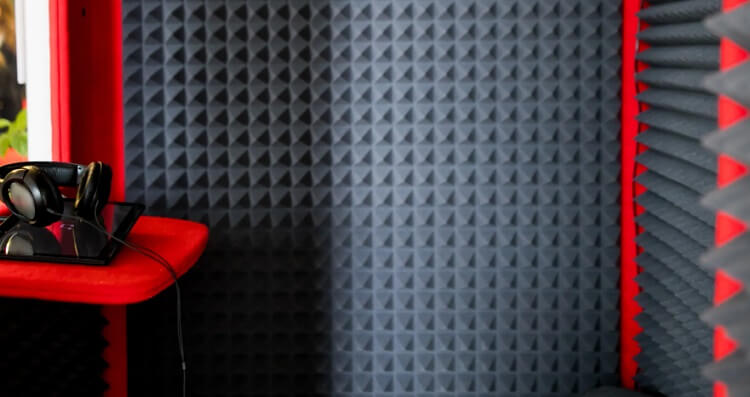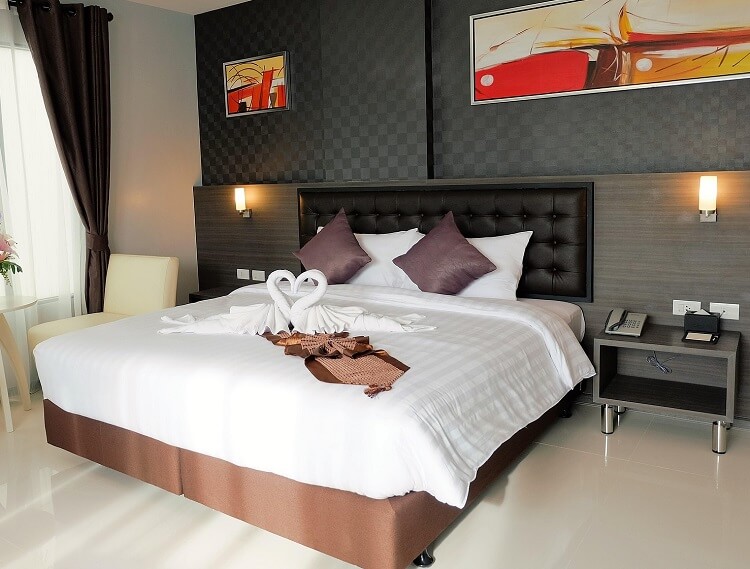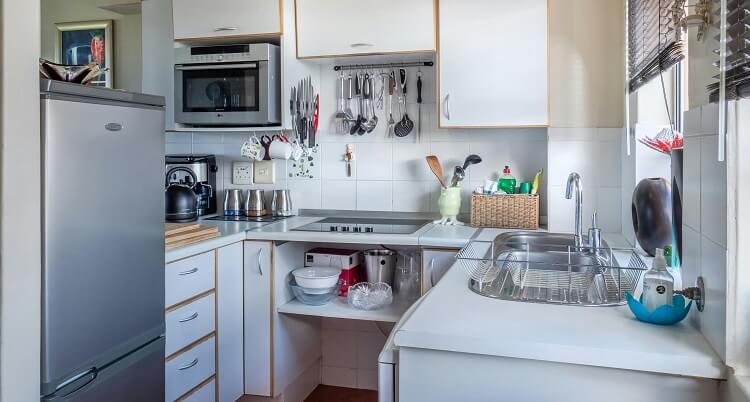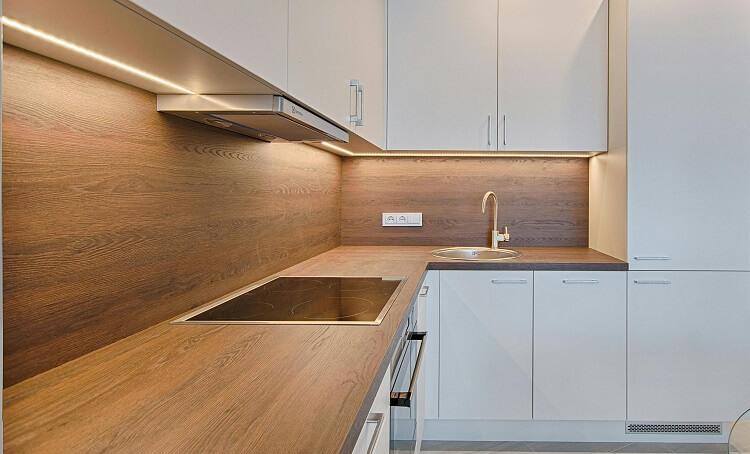
The rhythmic chopping of vegetables, the whirring of the blender, the sizzle of oil in a hot pan – these are the sounds of a vibrant kitchen. However, these sounds, along with noise from adjacent rooms or outside, can sometimes become overwhelming. Learning how to soundproof a kitchen wall can significantly enhance the comfort and tranquility of your home.
Whether you’re aiming to contain the clatter of a busy kitchen or create a more peaceful dining experience, implementing effective soundproofing methods can transform your space.
Top Soundproofing Methods for Kitchen Walls
1. Use Dense Materials to Block Noise
One of the most fundamental principles of soundproofing is adding mass. Sound travels through vibration; denser materials resist these vibrations more effectively.
Think of it like trying to push a heavy object versus a light one – the heavier object requires more energy to move. This principle applies to sound waves as well.
- Materials to Use: Mass-loaded vinyl (MLV) is a highly effective sound-blocking material due to its high density. Specifically designed for soundproofing, MLV comes in rolls or sheets and can be applied directly to walls.
Soundproof drywall, also known as QuietRock, is another excellent choice. It contains multiple layers and viscoelastic damping polymers that absorb and dissipate sound energy. Plywood, while less effective than MLV or soundproof drywall, can still contribute to noise reduction when used in conjunction with other methods.
- Why They Work: These materials reduce the transmission of sound vibrations by increasing the inertia of the wall.
They effectively convert sound energy into small amounts of heat, dampening the sound waves.
- Installation Tips: MLV can be installed directly over existing drywall using adhesive or mechanical fasteners. Soundproof drywall replaces standard drywall. Combining dense materials with other soundproofing techniques, such as decoupling, yields the best results.
2. Seal Gaps and Cracks
Sound, like air or water, will find the path of least resistance. Even seemingly insignificant gaps and cracks can compromise your soundproofing efforts. These small openings allow sound waves to bypass your dense materials and travel freely.
- Acoustic Caulk: Specifically formulated to remain flexible and not crack over time, acoustic caulk is essential for sealing gaps around electrical outlets, pipes, window frames, and baseboards.
- Weatherstripping: Applying weatherstripping around doors and windows adjacent to the kitchen helps create an airtight seal, preventing sound leakage.
Choose high-quality weatherstripping made from dense materials like rubber or foam.
- Foam Sealants: Expanding foam sealants are ideal for filling larger, irregular gaps and penetrations in walls, such as those around plumbing or electrical lines. The foam expands to fill the cavity completely, blocking sound transmission.
3. Install Acoustic Panels
While dense materials block sound transmission, acoustic panels absorb sound waves, reducing echo and reverberation within the kitchen itself.
They are particularly effective in open-concept kitchens or spaces with hard surfaces.
- Types: Fabric-wrapped panels offer a sleek, decorative look and come in various colors and patterns. Foam tiles provide a more budget-friendly option and are easy to install. Decorative acoustic art combines sound absorption with aesthetic appeal.
- Placement: Strategically place panels on walls where sound reflections are most prominent.
Consider areas opposite noisy appliances or where conversations tend to occur.
- Benefits: Acoustic panels not only reduce noise levels but also improve the overall sound quality within the kitchen, creating a more pleasant and comfortable environment.
4. Add Resilient Channels and Decoupling Techniques
Decoupling is a more advanced soundproofing method that involves creating a physical separation between the drywall and the wall studs. This break interrupts the vibration pathway, significantly reducing sound transmission.
- What They Do: Resilient channels are thin metal strips attached to the studs, creating an air gap before the drywall is installed.
This air gap acts as a buffer, absorbing vibrations and preventing them from transferring to the drywall.
- Best for: Decoupling is highly effective in situations with persistent noise issues, such as shared walls in apartments or homes located near busy streets.
- Installation Requirements: Due to its complexity, decoupling often requires professional installation. However, it offers substantial noise reduction benefits for challenging noise problems.
5. Use Soundproof Paint
Soundproof paint, while not a standalone solution, can contribute to noise reduction when used as part of a comprehensive strategy.
Its thick, viscoelastic formula dampens sound vibrations.
- How It Works: The heavy, dense composition of soundproof paint helps absorb sound waves, although to a lesser extent than dedicated soundproofing materials like MLV.
- Where to Apply: Apply soundproof paint to walls, ceilings, or specific areas within the kitchen where noise is a concern.
- Limitations: While relatively easy to apply, soundproof paint offers limited soundproofing capabilities on its own and is most effective when combined with other techniques. It’s best suited for minor noise issues or as a supplementary layer of soundproofing.
6. Add Bookshelves or Heavy Furniture Against the Wall
Strategically placing heavy furniture against a shared wall can provide an additional layer of sound absorption and blockage.
- How It Helps: The mass of the furniture helps to absorb and reflect sound waves, reducing transmission.
- Best Placement: Position bookshelves filled with books, or other heavy furniture items, directly against the wall you wish to soundproof.
- Extra Tip: Choose furniture with solid backs for better sound blocking. Ensure the furniture is flush against the wall to minimize air gaps that can allow sound to travel through.
7. Hang Thick Curtains or Tapestries
Soft furnishings can contribute to sound absorption and reduce echo within the kitchen.
Thick curtains or tapestries, especially those made from sound-dampening fabrics, can be a cost-effective solution.
- Ideal Materials: Look for curtains specifically designed for sound absorption, or choose heavy, densely woven fabrics like velvet or tapestry. Quilted blankets can also be effective.
- Where to Place: Hang curtains over windows or directly on the wall where noise is a problem. They can also be hung over doorways to help reduce sound transfer between rooms.
- Benefits: This method is relatively affordable and easy to implement, making it a good option for renters or those looking for a quick and simple soundproofing solution.
8. Install Double Drywall
Adding a second layer of drywall adds mass and creates an air gap, significantly improving soundproofing.
- How It Works: The additional layer of drywall increases the wall’s mass, making it more resistant to sound vibrations. The air gap between the layers further decouples the two surfaces, disrupting sound transmission.
- Pro Tip: Applying a specialized damping compound, like Green Glue, between the drywall layers significantly enhances soundproofing performance.
Green Glue converts sound energy into heat, further dampening vibrations.
- Best For: Double drywall is a highly effective solution for moderate to severe noise issues, especially in open-plan kitchen designs where sound can easily travel.
9. Opt for Acoustic Insulation
Filling wall cavities with acoustic insulation provides excellent sound absorption within the wall structure itself.
- Materials: Rockwool, fiberglass, and cellulose insulation are all effective choices for sound absorption. Rockwool, due to its higher density, generally performs best for soundproofing.
- How It Works: Acoustic insulation absorbs sound waves within the wall cavity, reducing sound transmission through the wall.
It also helps to dampen vibrations within the wall structure.
- Installation: Installing acoustic insulation typically involves removing a section of the wall to access the cavity. While this can be a more involved process, it provides substantial noise reduction, particularly for persistent noise problems.
10. Soundproof Doors and Windows in the Kitchen
Doors and windows are often weak points in a room’s soundproofing.
Addressing these areas is crucial for comprehensive noise reduction.
- Solutions: Replace hollow-core doors with solid-core doors for significantly improved sound blocking. Opt for double-pane windows with laminated glass and a wide air gap between panes for enhanced sound insulation.
- Additional Tips: Apply weatherstripping around door and window frames to seal any gaps. Adding heavy curtains or blinds further dampens noise and minimizes sound transmission.
- Benefits: Soundproofing doors and windows complements wall soundproofing efforts, creating a more complete and effective sound barrier.
FAQ
What is the most effective material for soundproofing kitchen walls?
Mass-loaded vinyl (MLV) and specialized soundproof drywall are among the most effective materials due to their high density and sound-damping properties.
For maximum effectiveness, combine these with other techniques like decoupling.
Can I soundproof my kitchen wall without professional help?
Yes, several soundproofing methods, such as sealing gaps with acoustic caulk, installing acoustic panels, adding heavy furniture, and hanging thick curtains, can be easily accomplished as DIY projects. However, more complex methods, like resilient channel installation or double drywall with Green Glue, might require professional expertise for optimal results.
How much does soundproofing a kitchen wall cost?
The cost of soundproofing varies greatly depending on the chosen method, materials, and the size of the wall. Basic DIY solutions, like sealing gaps and adding curtains, can start as low as $50-$100.
Using materials like MLV or acoustic panels can range from $1-$5 per square foot. Professional installation of decoupling systems or double drywall can cost $5-$15 or more per square foot, depending on the complexity and regional labor rates.
How long does it take to soundproof a kitchen wall?
Simple DIY projects, like sealing gaps or hanging curtains, can be completed in a few hours. Installing acoustic panels might take half a day to a full day, depending on the wall size and number of panels.
More complex projects, like installing double drywall or decoupling systems, could take one to three days for professional installation, or longer for DIY projects.
Conclusion
Soundproofing your kitchen wall is a worthwhile investment that can significantly enhance your quality of life. By strategically implementing a combination of techniques – from simple DIY fixes like sealing gaps and adding furnishings to more advanced methods like decoupling and double drywall – you can effectively minimize unwanted noise and create a more tranquil and comfortable living space.
Whether you choose how to soundproof a kitchen wall yourself or enlist the help of a professional, the resulting peace and quiet will undoubtedly be worth the effort, allowing you to fully enjoy the heart of your home.

